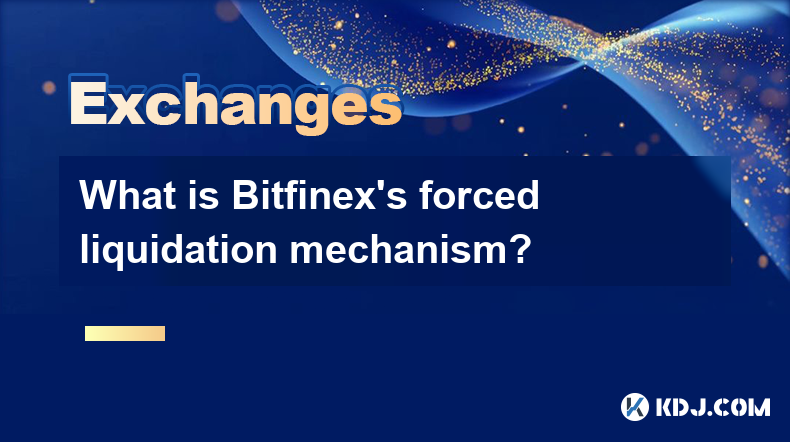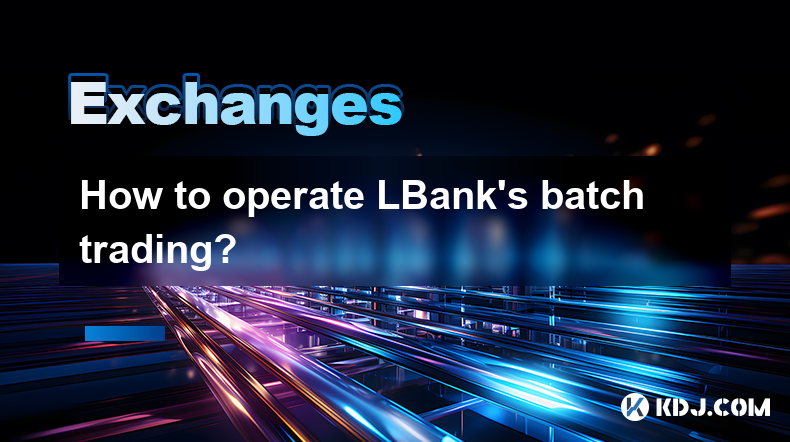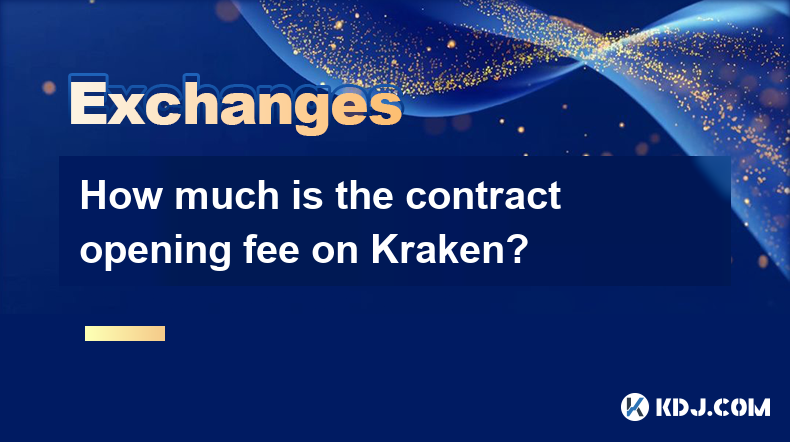-
 Bitcoin
Bitcoin $92,680.4827
-1.06% -
 Ethereum
Ethereum $1,752.0353
-3.50% -
 Tether USDt
Tether USDt $0.9999
-0.04% -
 XRP
XRP $2.1604
-4.74% -
 BNB
BNB $597.8192
-2.41% -
 Solana
Solana $147.9772
-2.60% -
 USDC
USDC $0.9997
-0.03% -
 Dogecoin
Dogecoin $0.1737
-5.16% -
 Cardano
Cardano $0.6892
-2.10% -
 TRON
TRON $0.2446
-0.60% -
 Sui
Sui $2.9979
3.29% -
 Chainlink
Chainlink $14.4341
-3.88% -
 Avalanche
Avalanche $21.9989
-3.49% -
 UNUS SED LEO
UNUS SED LEO $9.2400
1.80% -
 Stellar
Stellar $0.2656
-2.51% -
 Toncoin
Toncoin $3.1060
-0.80% -
 Shiba Inu
Shiba Inu $0.0...01313
-4.02% -
 Hedera
Hedera $0.1788
-3.78% -
 Bitcoin Cash
Bitcoin Cash $345.5624
-3.92% -
 Polkadot
Polkadot $3.9957
-3.28% -
 Litecoin
Litecoin $81.6247
-3.40% -
 Hyperliquid
Hyperliquid $17.8730
-6.22% -
 Dai
Dai $0.9999
0.00% -
 Bitget Token
Bitget Token $4.3985
-4.10% -
 Ethena USDe
Ethena USDe $0.9993
-0.02% -
 Pi
Pi $0.6479
-2.82% -
 Monero
Monero $223.6877
-2.21% -
 Uniswap
Uniswap $5.7553
-4.88% -
 Pepe
Pepe $0.0...08521
-6.96% -
 Aptos
Aptos $5.2919
-1.64%
What is Bitfinex's forced liquidation mechanism?
Bitfinex's forced liquidation mechanism protects users from crypto volatility by automatically selling assets when account balances fall below maintenance margin levels.
Apr 24, 2025 at 12:35 pm

Understanding Bitfinex's Forced Liquidation Mechanism
Bitfinex, one of the leading cryptocurrency exchanges, employs a forced liquidation mechanism to manage risk and maintain market stability. This mechanism is crucial for protecting both the platform and its users from the volatility inherent in the cryptocurrency market. The forced liquidation process is triggered when a trader's position moves into a negative margin, meaning the value of their account falls below the required maintenance margin level.
How Forced Liquidation Works on Bitfinex
When a trader's account balance dips below the maintenance margin, Bitfinex's system automatically initiates a forced liquidation. The goal is to close out the trader's position to prevent further losses that could exceed their account balance. The process is automated and follows a set of predefined rules to ensure fairness and transparency.
The liquidation process involves selling off the trader's assets at the current market price to cover the margin deficit. If the market is highly volatile, this could result in a cascade of liquidations, which is why Bitfinex has mechanisms in place to manage such scenarios.
The Role of Margin Levels in Forced Liquidation
Margin levels are critical in determining when a forced liquidation occurs. Bitfinex uses the following margin levels:
- Initial Margin: The amount required to open a position.
- Maintenance Margin: The minimum amount required to keep the position open.
When the account balance falls below the maintenance margin, the position is at risk of liquidation. Traders can monitor their margin levels through the Bitfinex platform to avoid unexpected liquidations.
Steps Involved in Bitfinex's Forced Liquidation
The forced liquidation process on Bitfinex involves several steps:
- Monitoring Margin Levels: The system continuously monitors the margin levels of all open positions.
- Triggering Liquidation: If the margin level falls below the maintenance margin, the liquidation process is triggered.
- Automated Selling: The system automatically sells the trader's assets to cover the margin deficit.
- Notification: The trader is notified of the liquidation event.
Impact of Forced Liquidation on Traders
Forced liquidation can have significant impacts on traders. If the market moves against a trader's position, they could face substantial losses. However, the mechanism is designed to limit these losses to the amount in their account, preventing negative balances. Traders need to be aware of the risks associated with margin trading and manage their positions carefully to avoid forced liquidation.
Strategies to Avoid Forced Liquidation
To minimize the risk of forced liquidation, traders can adopt several strategies:
- Use Stop-Loss Orders: Setting stop-loss orders can help limit potential losses and prevent the account from falling into a negative margin.
- Monitor Positions Closely: Regularly checking the margin levels and market conditions can help traders make timely adjustments to their positions.
- Diversify Holdings: Spreading investments across different assets can reduce the risk of a single position triggering a liquidation.
- Maintain Adequate Margin: Keeping the account balance above the maintenance margin level can prevent forced liquidation.
Technical Details of Bitfinex's Liquidation Engine
Bitfinex's liquidation engine is designed to handle high volumes of liquidations efficiently. The engine uses advanced algorithms to determine the best time and price to liquidate positions, aiming to minimize the impact on the market. The system also includes safeguards to prevent manipulation and ensure that liquidations are executed fairly.
Case Studies of Forced Liquidation on Bitfinex
Several instances in the past have highlighted the effectiveness of Bitfinex's forced liquidation mechanism. For example, during periods of extreme market volatility, such as the crypto market crash in March 2020, Bitfinex's system managed to handle a high volume of liquidations without significant disruptions. These case studies demonstrate the robustness and reliability of the platform's risk management tools.
Frequently Asked Questions
Q: How can I check my margin levels on Bitfinex?
A: To check your margin levels on Bitfinex, log into your account and navigate to the trading interface. The margin levels are displayed in the account summary section, showing your current margin level, initial margin, and maintenance margin.
Q: What happens if my account is liquidated and the market rebounds?
A: If your account is liquidated and the market rebounds, you will not benefit from the price increase because your position has already been closed. It's important to manage your positions carefully to avoid forced liquidation.
Q: Can I set custom margin levels on Bitfinex?
A: No, Bitfinex does not allow users to set custom margin levels. The platform uses standardized margin levels for all traders to ensure fairness and consistency.
Q: How quickly does Bitfinex execute forced liquidations?
A: Bitfinex's system is designed to execute forced liquidations as quickly as possible to minimize losses. The exact timing can vary based on market conditions, but the process is automated to ensure prompt action.
Disclaimer:info@kdj.com
The information provided is not trading advice. kdj.com does not assume any responsibility for any investments made based on the information provided in this article. Cryptocurrencies are highly volatile and it is highly recommended that you invest with caution after thorough research!
If you believe that the content used on this website infringes your copyright, please contact us immediately (info@kdj.com) and we will delete it promptly.
- Spot Bitcoin ETF inflows are at their highest since January 2025.
- 2025-04-24 21:10:12
- Mantle Network Launches MI4, a Institutional-Grade Digital Asset Index Fund Targeting $400M Market Gap
- 2025-04-24 21:10:12
- Infrared Finance Launches Points Program to Incentivize User Engagement Ahead of Token Launch
- 2025-04-24 21:05:12
- The Rise of Cardano (ADA) and Its Potential Impact on Coldware (COLD)
- 2025-04-24 21:05:12
- Bitcoin (BTC) price surges by 9.4% over the last seven days, with a single-day spike of 9.65%
- 2025-04-24 21:00:12
- The 10 Most Valuable Roosevelt Dimes
- 2025-04-24 21:00:12
Related knowledge

Where to view LBank's API documentation?
Apr 24,2025 at 06:21am
LBank is a popular cryptocurrency exchange that provides various services to its users, including trading, staking, and more. One of the essential resources for developers and advanced users is the API documentation, which allows them to interact with the platform programmatically. In this article, we will explore where to view LBank's API documentation...

Which third-party trading robots does Bitfinex support?
Apr 24,2025 at 03:08am
Bitfinex, one of the leading cryptocurrency exchanges, supports a variety of third-party trading robots to enhance the trading experience of its users. These robots automate trading strategies, allowing traders to execute trades more efficiently and potentially increase their profits. In this article, we will explore the different third-party trading ro...

How to operate LBank's batch trading?
Apr 23,2025 at 01:15pm
LBank is a well-known cryptocurrency exchange that offers a variety of trading features to its users, including the option for batch trading. Batch trading allows users to execute multiple trades simultaneously, which can be particularly useful for those looking to manage a diverse portfolio or engage in arbitrage opportunities. In this article, we will...

How much is the contract opening fee on Kraken?
Apr 23,2025 at 03:00pm
When engaging with cryptocurrency exchanges like Kraken, understanding the fee structure is crucial for managing trading costs effectively. One specific fee that traders often inquire about is the contract opening fee. On Kraken, this fee is associated with futures trading, which allows users to speculate on the future price of cryptocurrencies. Let's d...

How to use cross-chain transactions on Kraken?
Apr 23,2025 at 12:50pm
Cross-chain transactions on Kraken allow users to transfer cryptocurrencies between different blockchain networks seamlessly. This feature is particularly useful for traders and investors looking to diversify their portfolios across various blockchains or to take advantage of specific opportunities on different networks. In this article, we will explore...

How to set up sub-account permissions on Bitfinex?
Apr 24,2025 at 03:08pm
Setting up sub-account permissions on Bitfinex is an essential feature for users who need to manage multiple accounts or delegate certain tasks to others. This guide will walk you through the detailed process of configuring sub-account permissions, ensuring you can manage your cryptocurrency activities effectively and securely. Accessing the Sub-Account...

Where to view LBank's API documentation?
Apr 24,2025 at 06:21am
LBank is a popular cryptocurrency exchange that provides various services to its users, including trading, staking, and more. One of the essential resources for developers and advanced users is the API documentation, which allows them to interact with the platform programmatically. In this article, we will explore where to view LBank's API documentation...

Which third-party trading robots does Bitfinex support?
Apr 24,2025 at 03:08am
Bitfinex, one of the leading cryptocurrency exchanges, supports a variety of third-party trading robots to enhance the trading experience of its users. These robots automate trading strategies, allowing traders to execute trades more efficiently and potentially increase their profits. In this article, we will explore the different third-party trading ro...

How to operate LBank's batch trading?
Apr 23,2025 at 01:15pm
LBank is a well-known cryptocurrency exchange that offers a variety of trading features to its users, including the option for batch trading. Batch trading allows users to execute multiple trades simultaneously, which can be particularly useful for those looking to manage a diverse portfolio or engage in arbitrage opportunities. In this article, we will...

How much is the contract opening fee on Kraken?
Apr 23,2025 at 03:00pm
When engaging with cryptocurrency exchanges like Kraken, understanding the fee structure is crucial for managing trading costs effectively. One specific fee that traders often inquire about is the contract opening fee. On Kraken, this fee is associated with futures trading, which allows users to speculate on the future price of cryptocurrencies. Let's d...

How to use cross-chain transactions on Kraken?
Apr 23,2025 at 12:50pm
Cross-chain transactions on Kraken allow users to transfer cryptocurrencies between different blockchain networks seamlessly. This feature is particularly useful for traders and investors looking to diversify their portfolios across various blockchains or to take advantage of specific opportunities on different networks. In this article, we will explore...

How to set up sub-account permissions on Bitfinex?
Apr 24,2025 at 03:08pm
Setting up sub-account permissions on Bitfinex is an essential feature for users who need to manage multiple accounts or delegate certain tasks to others. This guide will walk you through the detailed process of configuring sub-account permissions, ensuring you can manage your cryptocurrency activities effectively and securely. Accessing the Sub-Account...
See all articles























































































